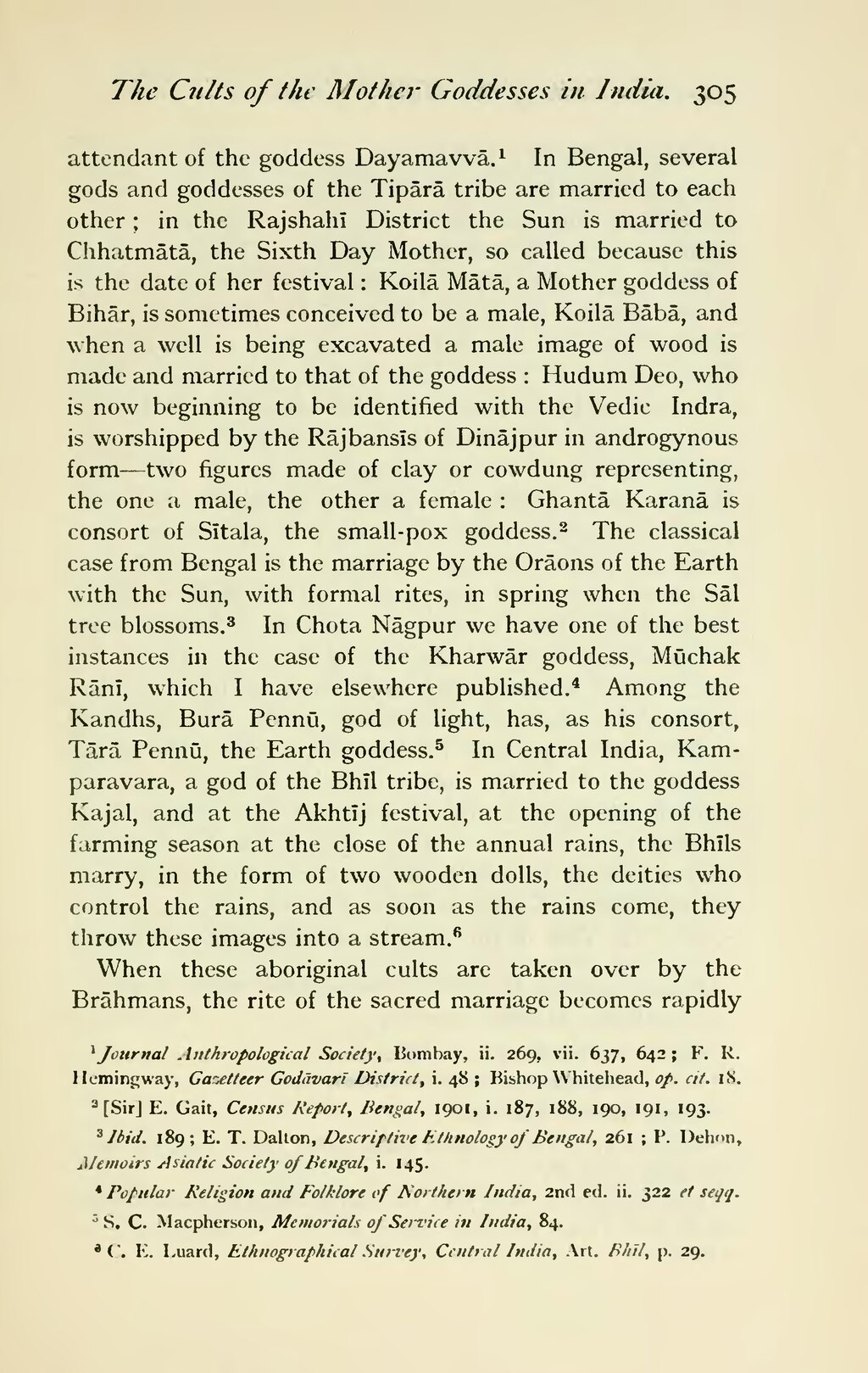attendant of the goddess Dayamavvā.[1] In Bengal, several gods and goddesses of the Tipārā tribe are married to each other; in the Rajshahī District the Sun is married to Chhatmātā, the Sixth Day Mother, so called because this is the date of her festival: Koilā Mātā, a Mother goddess of Bihār, is sometimes conceived to be a male, Koilā Bābā, and when a well is being excavated a male image of wood is made and married to that of the goddess: Hudum Deo, who is now beginning to be identified with the Vedic Indra, is worshipped by the Rājbansīs of Dinājpur in androgynous form—two figures made of clay or cowdung representing, the one a male, the other a female: Ghantā Karanā is consort of Sītala, the small-pox goddess.[2] The classical case from Bengal is the marriage by the Orāons of the Earth with the Sun, with formal rites, in spring when the Sāl tree blossoms.[3] In Chota Nāgpur we have one of the best instances in the case of the Kharwār goddess, Māchak Rānī, which I have elsewhere published.[4] Among the Kandhs, Burā Pennū, god of light, has, as his consort, Tārā Pennū, the Earth goddess.[5] In Central India, Kamparavara, a god of the Bhīl tribe, is married to the goddess Kajal, and at the Akhtīj festival, at the opening of the farming season at the close of the annual rains, the Bhīls marry, in the form of two wooden dolls, the deities who control the rains, and as soon as the rains come, they throw these images into a stream.[6]
When these aboriginal cults are taken over by the Brāhmans, the rite of the sacred marriage becomes rapidly
- ↑ Journal Anthropological Society, Bombay, ii. 269, vii. 637, 642; F. R. Hemingway, Gazetteer Godāvarī District, i. 48; Bishop Whitehead, op. cit. 18.
- ↑ [Sir] E. Gait, Census Report, Bengal, 1901, i. 187, 188, 190, 191, 193.
- ↑ Ibid. 189; E. T. Dallon, Descriptive Ethnology of Bengal, 261; P. Dehon, Memoirs Asiatic Society of Bengal, i. 145.
- ↑ Popular Religion and Folklore of Northern India, 2nd ed. ii. 322 et seqq.
- ↑ S. C. Macpherson, Memorials of Service in India, 84.
- ↑ C E. Luard, Ethnographical Survey, Central India, Art. Bhīl, p. 29.
